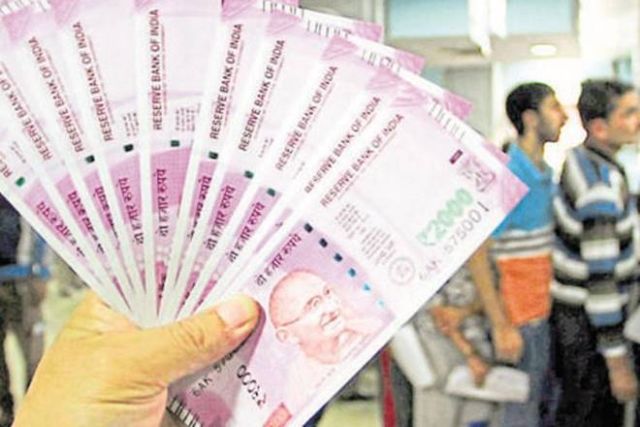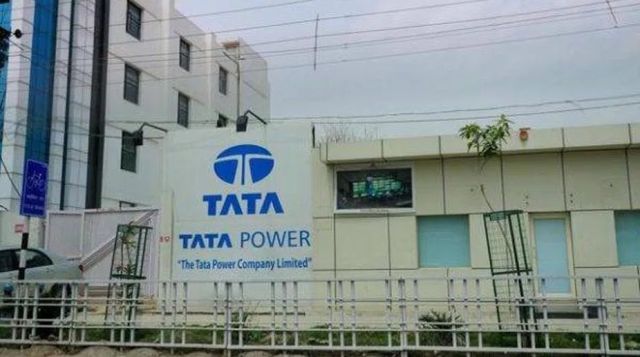
by admin | May 25, 2021 | Economy, News
 New Delhi : Income inequality in India has increaed since deregulation started in the 1980s, with the top 10 per cent of earners accounting for 55 per cent of the national wealth in 2016, according to a global research report released on Wednesday.
New Delhi : Income inequality in India has increaed since deregulation started in the 1980s, with the top 10 per cent of earners accounting for 55 per cent of the national wealth in 2016, according to a global research report released on Wednesday.
The India-specific finding of the ‘World Inequality Report 2018’ authored, among others, by noted economists Thomas Piketty and Lucas Chancel, has a part on the country titled ‘Indian income inequality, 1922-2014: From British Raj to Billionaire Raj?’.
Based on the World Wealth and Income Database, which co-author Chancel described at the release here as “most extensive database on income and wealth”, the report said inequality in India has risen substantially since the 1980s following “profound transformations in an economy that centered on the implementation of deregulation and opening up reforms”.
“In 2014, the share of national income captured by India’s top one per cent of earners was 22 per cent, while the share of the top 10 per cent of earners was around 56 per cent. The top 0.1 per cent of earners has continued to capture more growth than all those in the bottom 50 per cent combined,” it said.
“This rising inequality contrasts to the 30 years following the country’s independence in 1947, when income inequality was widely reduced and the incomes of the bottom 50 per cent grew at a faster rate than the national average,” the report added.
Based on a analysis of fiscal and other data over a long period of time, it said income inequality in India is at its highest since 1922, when the Income Tax Act was passed.
The top one per cent of income earners captured less than 21 per cent of total income in the late 1930s, before dropping to 6 per cent in the early 1980s and after, the report said.
However, with the top 10 per cent of earners capturing 55 per cent of the national income in 2016, India is the worst performer on this score among major regions, except the Middle East, the study findings showed.
More importantly, the report disputes the discourse that rising inequality is an inevitable fallout of growth in the times of globalisation.
“The fact that inequality trends vary so greatly among countries, even when countries share similar levels of development, highlights the important role of national policies in shaping inequality,” it said.
Comparing the China and India growth trajectories since 1980, it said China recorded much higher growth rates with significantly lower inequality levels than India.
“The positive conclusion of the World Inequality Report is that policy matters a lot,” Chancel said.
“Since 1980, income inequality has increased rapidly in North America, China, India, and Russia, while growing moderately in Europe. However, there are exceptions to this pattern: In the Middle East, sub-Saharan Africa, and Brazil, income inequality has remained relatively stable, at extremely high levels,” the report said.
It also revealed the dramatic decline in the net wealth of governments over the past decades and the decline in public capital, ushering in greater concentration of wealth in private hands.
—IANS

by admin | May 25, 2021 | Markets, Social Media, Technology
 San Francisco : Aimed at reducing hateful content on its platform, Twitter will start penalising accounts from Monday that include “hateful imagery and display names”, or those who “use username, display name, or profile bio to engage in abusive behaviour”, the media reported.
San Francisco : Aimed at reducing hateful content on its platform, Twitter will start penalising accounts from Monday that include “hateful imagery and display names”, or those who “use username, display name, or profile bio to engage in abusive behaviour”, the media reported.
According to a report in ReCode late on Sunday, “for Twitter, the two new restrictions are attempts to combat rampant harassment and abuse on the site”.
Twitter announced new guidelines covering abuse, hateful conduct, violence and physical harm in November.
Facing criticism over the years for its poor handling of “abuse”, Twitter “updated” its rules in October and November, clarifying its policies on graphic violence, spam and self-harm, among others.
The changes are part of revamp to Twitter’s policies surrounding online abuse.
The biggest updates on the platform include abusive behaviour, self-harm, spam and related behaviours, graphic violence and adult content.
Twitter CEO Jack Dorsey has also announced plans to act more aggressively on violence and sexual abuse.
In an internal email which was obtained by Wired.com, Twitter’s head of safety policy in October emailed members of its Trust and Safety Council on new rules to promote free speech and curb violence and sexual harassment.
“We hope our approach and upcoming changes, as well as our collaboration with the Trust and Safety Council, show how seriously we are rethinking our rules and how quickly we’re moving to update our policies and how we enforce them,” Twitter said.
“We will immediately and permanently suspend any account we identify as the original poster/source of non-consensual nudity and/or if a user makes it clear they are intentionally posting said content to harass their target,” the email read.
“If the account appears to be dedicated to posting non-consensual nudity then we will suspend the entire account immediately,” it added.
On hate symbols and imagery, it said: “At a high level, hateful imagery, hate symbols, etc will now be considered sensitive media (similar to how we handle and enforce adult content and graphic violence)”.
On violent groups, Twitter said it will take enforcement action against organisations that use or have historically used violence as a means to advance their cause.
—IANS

by admin | May 25, 2021 | Corporate, Corporate Reports, Investing
 New Delhi : Global corporate giants are investing hugely in water security and management with a three-fold rise in just one year, an annual water report said on Tuesday. They committed to $23.4 billion of investment in water projects in 2017 alone.
New Delhi : Global corporate giants are investing hugely in water security and management with a three-fold rise in just one year, an annual water report said on Tuesday. They committed to $23.4 billion of investment in water projects in 2017 alone.
In India too, companies are spending heavily to mitigate the risk of water supply with Tata Steel $38 million, ITC along with MNCs like Diageo, L’Oreal and Symrise AG also reporting spends in millions.
The report, ‘A turning tide: Tracking corporate action on water security’, published by non-profit environmental disclosure platform CDP, analyses water data from 742 of the world’s largest companies, including Nestle, Burberry and Kellogg’s.
It finds escalating boardroom engagement in water issues. The report highlights growing accountability and performance in water management with a 40 per cent increase in disclosure since 2016 and a 193 per cent increase in the number of companies featured on the CDP water A List.
The US (13), Japan (12) and Britain (nine) are the three countries with the most companies on the water A List.
Companies committed to $23.4 billion of investment in water projects in 2017 such as desalination plants, reclaiming waste water or improved irrigation to avoid droughts across 1,000 projects in 91 countries.
The report says the energy sector continues to be the biggest laggard, with 101 out of the 138 energy companies asked to disclose failed to do so.
Exxon Mobil and Royal Dutch Shell are among those companies persistently failing to reveal water data to investors via CDP.
Seven companies including Diageo (Britain), Colgate Palmolive (US) and Nestle (Switzerland) are now putting a higher price on water internally to reflect its increasing business cost.
“From Bangladesh to Peru and the US, climate risks – and in particular water risks – have been very real in 2017,” an official statement quoting CDP’s water scoring partner and South Pole Group CEP Renat Heuberger said.
“South Pole Group believes companies need to continue to improve their understanding, management, and transparency of water risks, in order to help inform better decision making. Together with CDP, we are committed to delivering a water-secure world.”
Companies in India increasingly report that both quality and quantity issues are constraining their business, CDP India Director Damandeep Singh told IANS.
“With uncertainty in monsoon rains and declining water availability many companies have stepped up water conservation efforts in close collaborations with stakeholders in their watersheds and river basins.
“However, many more initiatives are required which include incorporating the true value of water into their core business strategy,” he said.
In total, 4,653 companies were asked to report to CDP on their water activities in 2017, with a 44 per cent response rate.
—IANS

by admin | May 25, 2021 | Branding, Corporate, Corporate Reports, Marketing Basics, Markets, Networking, Online Marketing, Sales, Social Media, Technology
 San Francisco : Essentially a hardware-focused firm, Apple is falling behind in the Artificial Intelligence (AI) race with Google and Amazon racing ahead while embracing the open-source and collaborative approach in the emerging field of AI, Fortune reported.
San Francisco : Essentially a hardware-focused firm, Apple is falling behind in the Artificial Intelligence (AI) race with Google and Amazon racing ahead while embracing the open-source and collaborative approach in the emerging field of AI, Fortune reported.
According to Mohanbir Sawhney, McCormick Foundation professor of technology at the Kellogg School of Management at Northwestern University, sheets of glass are simply no longer the most fertile ground for innovation.
“That means Apple urgently needs to shift its focus and investment to AI-driven technologies, as part of a broader effort to create the kind of ecosystem Amazon and Google are building quickly,” Sawhney wrote in Fortune.
According to him, Apple has reached its peak with “super premium” iPhone X and “does not represent the beginning of the next 10 years of the smartphone, as Apple claims”.
Apple launched the iPhone X globally on Friday.
Players pursue innovation along a vector of differentiation until the vector runs out of steam.
“When that happens, the focus of innovation shifts to a different vector and new market leaders emerge. We have seen this pattern several times in mobile phone innovation over the past three decades,” Sawhney said.
The vector of differentiation is now shifting from hardware to AI and AI-based software and agents.
“As AI-driven phones like Google’s Pixel 2 and virtual agents like Amazon Echo proliferateaToday’s smartphones will likely recede into the background,” he stressed.
Google Pixel phones offers great photo-enhancement features and deeper hardware-software integration driven by AI-based technology.
The second edition of Pixel features 5-inch display, 4GB RAM, 12MP rear and 8MP front camera, and 2,700mAH battery.
Google will bring Pixel 2 XL (6-inch display) into the Indian market from November 15 onwards.
The Amazon Echo enables natural conversations through the Alexa virtual agent.
“Apple has only to look at Motorola, Nokia, and Blackberry to understand how quickly a leader can fall from the peak in this market, and do its best to avert this outcome,” Sawhney added.
—IANS

 New Delhi : Income inequality in India has increaed since deregulation started in the 1980s, with the top 10 per cent of earners accounting for 55 per cent of the national wealth in 2016, according to a global research report released on Wednesday.
New Delhi : Income inequality in India has increaed since deregulation started in the 1980s, with the top 10 per cent of earners accounting for 55 per cent of the national wealth in 2016, according to a global research report released on Wednesday.


